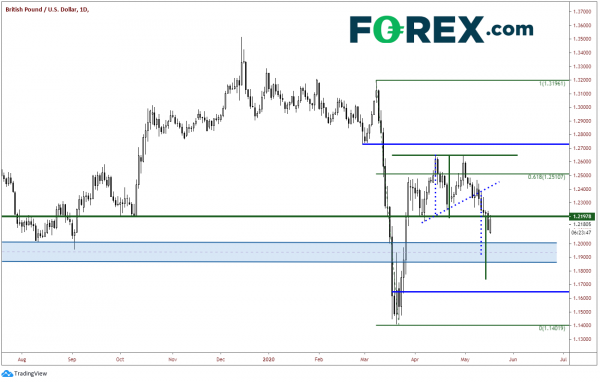The Great British Pound was under pressure last week as talks between the UK and the EU broke down. Both sides admit to very little progress, and EU’s Barnier went as far to say that he was disappointed by the lack of ambition on the UK side. The current deadline is June 30th and UK’s Johnson has said multiple times that he will next extend it. The Telegraph reported that BOE’s Haldane said over the weekend that the BOE is “considering” negative rates. The BOE does not meeting again until June 18th, however for the past few months, central banks have been applying stimulus on an “as needed” basis. Watch for more comments from BOE officials. On Tuesday, the UK will release their Claimant Count Change for April. Expectations are +676,500 new claims vs 12,200 in March, however as with most of the horrible data for April, this may not have too much effect on the markets.
On Sunday evening, US Fed’s Powell said that the US economy may not recover until late-2021 and he fears Congress’s initial #3 trillion bailout may not be enough (however Congress is working on an additional $3 trillion pandemic relief package). He also said that the Fed has more stimulus ammunition if needed. Powell and Treasury Secretary Mnuchin will testify on the effects of the Coronavirus on the US economy before the Joint Economic Committee. Powell speaks Thursday as well. His comments will be closely monitored for any language regarding negative interest rates. Last week, Fed members spoke in unison against negative interest rates, however the Fed Funds curve is pricing in negative rates into mid-2021.
Both counties will release their Manufacturing and Services PMIs for May. This will be the first look at any real data for May for both countries. In addition, both countries are in the process of “reopening” their economies. Daily coronavirus updates for each country will be watched to see if the rates of increase in new cases continues to decline.
On a daily timeframe, there are two possible setups in play. The first is a double top formation at 1.2500 (solid green lines) which failed twice at the 61.8% Fibonacci retracement level from the highs on March 9th to the lows on March 19th. The neckline for the double top was broken at 1.2200. The target is the height of the pattern added to the breakdown point, which in this case is near 1.1740. The second pattern in play is a head and shoulders pattern formation (dotted blue line). The target for a head and shoulders is the distance from the head to the neckline added to the breakdown point of the neckline. In this case the target is near 1.1900.

Source: Tradingview, FOREX.com
One could eye the head and shoulders target as a first target and make a decision there as to if this may play our further as the double top. Keep in mind that there is a significant support zone between 1.1850 and 1.2000 dating back to October 2016. After that, horizontal support crossed as 1.1650, and finally the recent lows near 1.1400. Near term resistance is at 1.2200, which is the neckline of the double top. Above there, resistance is at the neckline of the head and shoulders pattern near 1.2420 and then the double top highs at 1.2500.
There could be significant volatility in GBP/USD this week given Brexit discussions, BOE and FED comments on negative rates, economic data, and the technical setup. Make sure to use appropriate risk/rewards ratios!


 Signal2forex.com - Best Forex robots and signals
Signal2forex.com - Best Forex robots and signals




